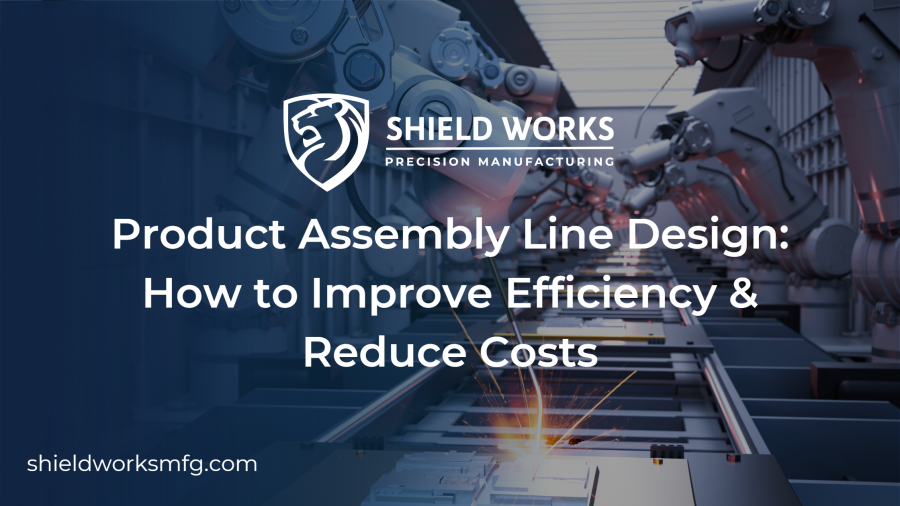Product Assembly Line Design: How to Improve Efficiency and Reduce Costs

Product assembly lines are the backbone of modern manufacturing. They are used to produce goods efficiently and at a low cost. However, designing an efficient and cost-effective assembly line can be a challenging task. In this blog post, we will discuss some key strategies for designing a product assembly line that improves efficiency and reduces costs.
Understand Your Product
First and foremost, it is essential to understand the product being assembled. This includes understanding the product’s dimensions, weight, and required assembly steps. This information will help determine the layout of the assembly line and the equipment needed.
For example, if the product is large and heavy, a conveyor belt system may be required, whereas a smaller product may only require a workbench.
Understanding the product also helps in determining the number of stations required on the assembly line, the type of equipment needed and the number of employees required to operate the assembly line.
Moreover, it’s important to consider the product’s life cycle and production volume, to make sure that the assembly line is designed to meet current and future needs.
Know the Flow
Another important aspect to consider is the flow of the assembly line. The goal is to create a smooth and efficient flow of materials, components, and finished products.
This can be achieved by using techniques such as lean manufacturing, which focuses on eliminating waste and maximizing efficiency. Lean manufacturing focuses on the elimination of waste, which includes anything that does not add value to the product. This includes overproduction, waiting, unnecessary transportation, overprocessing, excess inventory, unnecessary motion, and defects.
By eliminating waste, manufacturers can improve efficiency and reduce costs. Furthermore, the flow of the assembly line should be designed in a way that minimizes the distance and time that materials, components, and finished products need to travel. This can be achieved by using techniques such as U-shaped assembly lines, cellular manufacturing, and continuous flow manufacturing.
Automate Certain Tasks
One way to reduce costs is by automating certain tasks on the assembly line. Automation can improve efficiency and reduce the need for manual labor, which can be costly.
However, it is important to strike a balance between automation and manual labor, as some tasks may be better suited for manual labor. For example, tasks that require a high degree of precision and accuracy may be better suited for automation, whereas tasks that require dexterity and flexibility may be better suited for manual labor.
Additionally, automation can help with reducing the variability of the process, which can lead to improved quality and consistency of the product.
Use Robotics
In addition to automation, it’s important to consider the use of robotics on the assembly line. Robotics can improve the speed and accuracy of certain tasks, but it’s important to weigh the costs of implementation and maintenance. Robotics can be an expensive investment, and it’s important to ensure that the benefits outweigh the costs.
Robotics can also be integrated with automation, which can lead to significant improvements in efficiency and cost reduction. Moreover, the use of robotics in the assembly line can help with reducing the need for manual labor, which can improve the safety of the assembly line.
Create a Maintenance Program
It’s also important to implement a maintenance program for the assembly line to ensure that it is running at peak performance. Regular maintenance can help prevent breakdowns, which can be costly in terms of both time and money.
A good maintenance program should include regular inspections, preventive maintenance, and predictive maintenance. Regular inspections can identify potential problems before they occur, preventive maintenance can prevent problems from occurring, and predictive maintenance can predict when equipment will fail, so that maintenance can be performed before a failure occurs.
Furthermore, it’s important to consider the maintenance of the software and the computer systems that are used to control the assembly line.
Ensure Safety
Lastly, it’s crucial to consider the safety of the assembly line. This includes providing proper training for employees, implementing safety protocols and regulations, and regularly inspecting the assembly line for potential hazards. A safe assembly line not only protects the employees from injury, but it also protects the equipment from damage and reduces the risk of liability.
Proper training for employees is essential for ensuring the safety of the assembly line. This includes training on the proper use of equipment, as well as training on safety protocols and regulations. It’s important to provide ongoing training, as new equipment and procedures are introduced. Additionally, it’s important to provide training in emergency procedures, in case of a breakdown or accident.
Designing an efficient and cost-effective product assembly line requires a thorough understanding of the product, the flow of the assembly line, automation, robotics, maintenance, safety, inventory management, digital design, and data analytics. By implementing these strategies, manufacturers can improve efficiency, reduce costs, and ensure that the assembly line is running smoothly. It’s important to remember that the design of the assembly line is not a one-time process and it should be reviewed and updated regularly, to keep up with the changing market conditions and technology advancements.
Working with an experienced manufacturer already with a system in place can help you significantly in securing all the above recommendations. Shield Works is one that you can count on with 17 years of experience and our self-owned facility. Contact us now!
